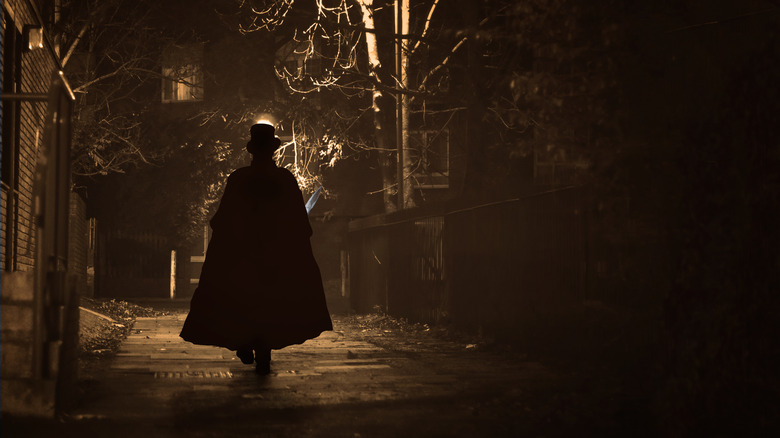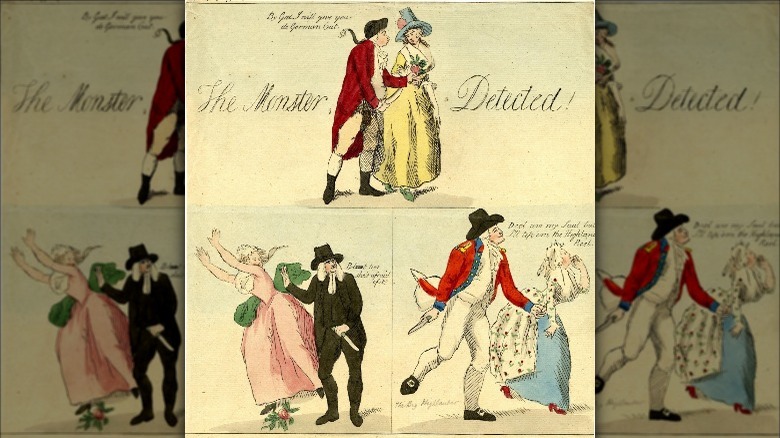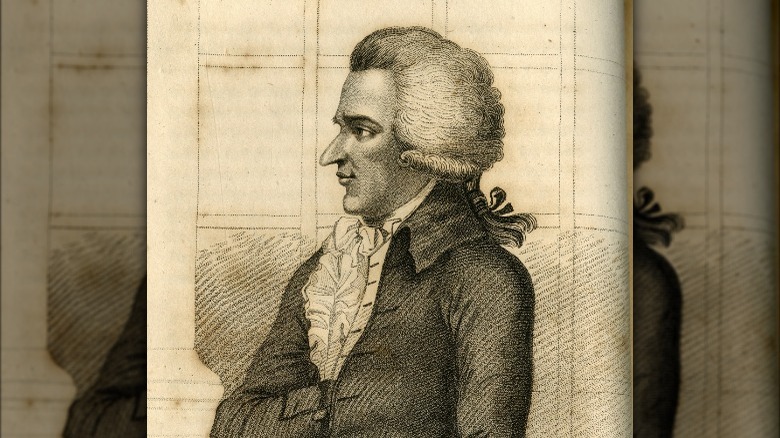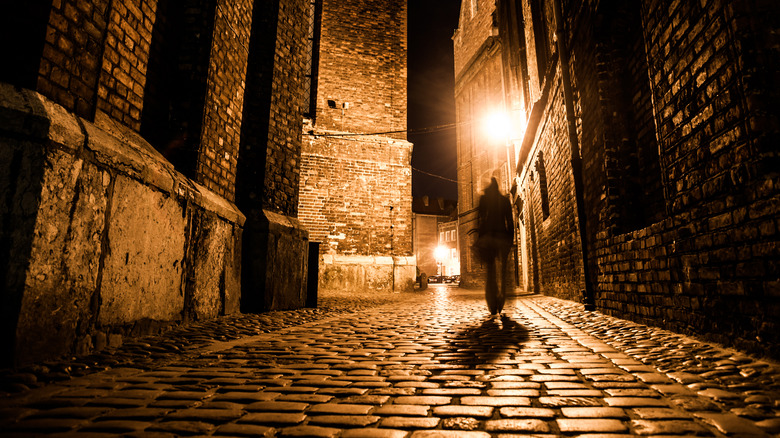Before Jack The Ripper, Another 'Monster' Terrified The Streets Of London
Jack the Ripper terrorized the streets of Whitechapel, East London, between August and November 1888. He brutally murdered at least five women in that period, and Scotland Yard did its best using what was available at that time to capture the perpetrator. Despite a number of suspects, no one was arrested for the murders, and his identity remains a mystery to this day. About a century before the Whitechapel murders, however, another assailant known as the "London Monster" targeted women.
Between 1788 and 1790, several women reported an unknown man who brandished a rapier or knife and stabbed them on different parts of their bodies, most often their buttocks, thighs, face, or breasts, as reported by Ancient Origins. The targets were beautiful, fashionable women, and they were attacked while walking down the street. The incidents baffled the community and authorities, and newspaper reports about the perpetrator caused public panic and outrage. The media dubbed the assailant the "London Monster," and he was so notorious that he became the inspiration for plays and caricatures.
The London Monster's attacks
The London Monster's first recorded attack was on a woman named Maria Smyth. She was stabbed in the thigh and breast by an unknown assailant and had a nervous breakdown as a result (via Ancient Origins). Some women claimed that the man told them some crude things before he hurt them. The London Monster had several tricks up his sleeve. In some cases, he kicked unsuspecting women from behind while wearing shoes with spikes, and other times he hid a sharp weapon in a bouquet of flowers and stabbed women in the face, as reported by Wales Online. Women started wearing copper petticoats, pots, and corks under their skirts to avoid getting slashed.
The victims gave varying descriptions in regard to the London Monster's hair color, height, and the way he dressed, and it was highly suspected that he made use of wigs and different types of clothing to avoid being properly identified and captured, according to Strand Magazine. Some journalists suspected that the London Monster was a pickpocket who accidentally stabbed the women while attempting to slash their skirts, but it was also suggested that the perpetrator had piquerism, a rare disorder wherein a person gains sexual gratification from cutting, slicing, or stabbing someone else's flesh, per the Journal of Forensic Sciences. By 1790, there were more than 50 reports of attacks (fortunately no fatalities) by the London Monster, and in June of that year, a suspect was arrested.
Who was the London Monster?
A 23-year-old man named Rhynwick Williams was identified as the London Monster. One of the victims, Anne Porter, confirmed that Williams was the one who attacked her in January 1790, and her sisters backed up her statement and said that he commonly used foul language and stalked women (via the Strand Magazine). Williams came from a respected family. His father was a well-known apothecary and he was a ballet dancer. However, he was terminated from his work at the theater after being suspected of stealing.
Williams resorted to doing odd jobs to survive and was at one point employed at a factory that manufactured artificial flowers. Porter and other victims were sure that Williams was the London Monster, but some women were adamant that he was not the person who attacked them. In addition, Williams' co-workers at the flower factory provided an alibi that put him at a different location from where Porter was when she was attacked. The public wanted Williams to be prosecuted for felony, which was punishable by death, but the judge decided that he should be tried for misdemeanors.
Was he the real London Monster?
Rhynwick Williams was convicted of the crimes and was sentenced to six years at Newgate Gaol. According to Strand Magazine, the attacks on women stopped after Williams' arrest. However, there are some who believe that he was wrongfully convicted. Historian Jan Bondeson, who wrote the book "The London Monster: Terror on the Streets," stated that authorities at that time were pressured to find the perpetrator because of the public outrage and panic that the attacks caused. Bondeson stated that there was evidence that authorities coached victims to point out Williams as the suspect. He stated that Williams "was probably a pervert who liked to insult women and one of the misogynistic characters who roamed the streets, but in my mind it is not proven that he stabbed anybody."
Bondeson noted that it's quite possible that Williams was used as a scapegoat to appease the public, per the Daily Mail. Furthermore, he is positive that there were several perpetrators. Copycats most likely imitated the original attacker, and it's not impossible, as the reports were widely reported. Bondeson stated that the case "constitutes the earliest known example of copycat crime." Other historians believe that there was no monster at all and that the panic was just caused by mass hysteria.



